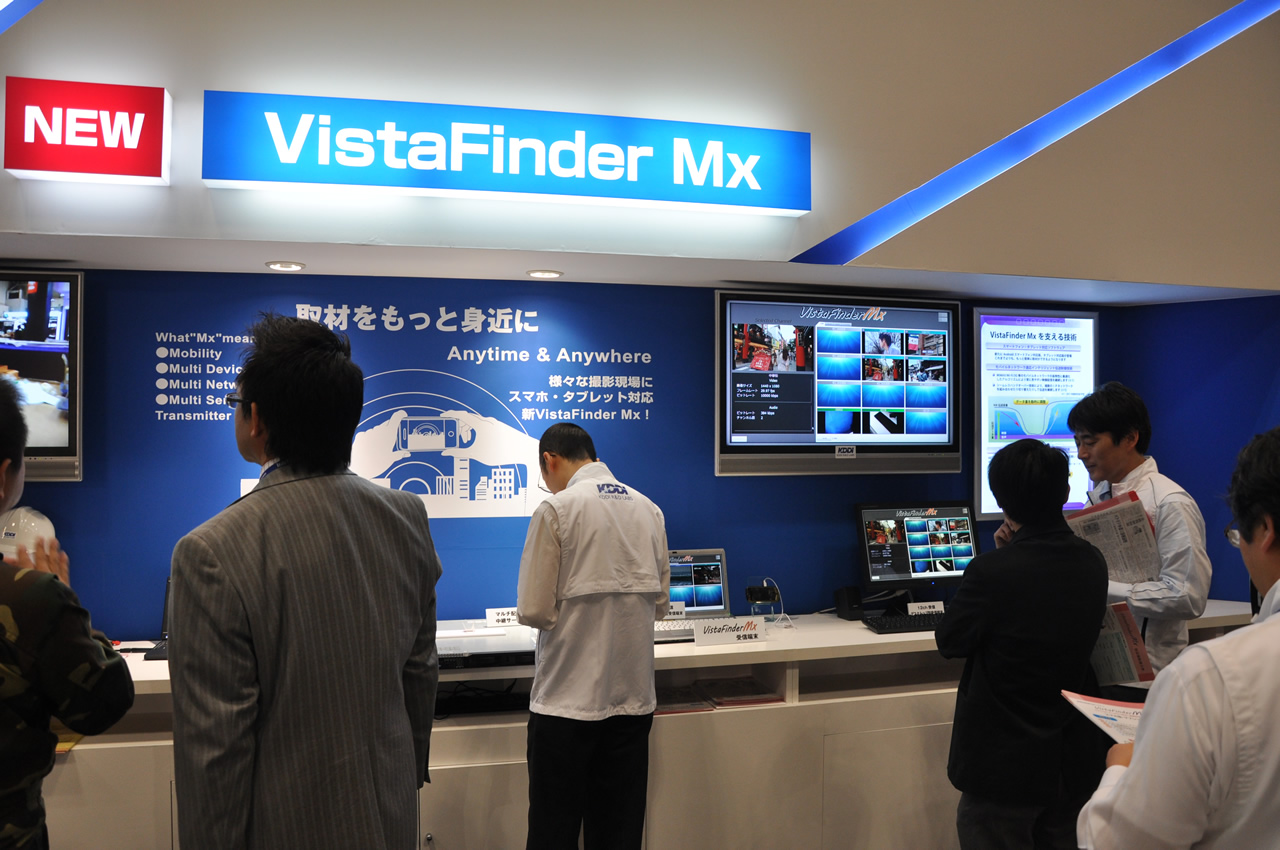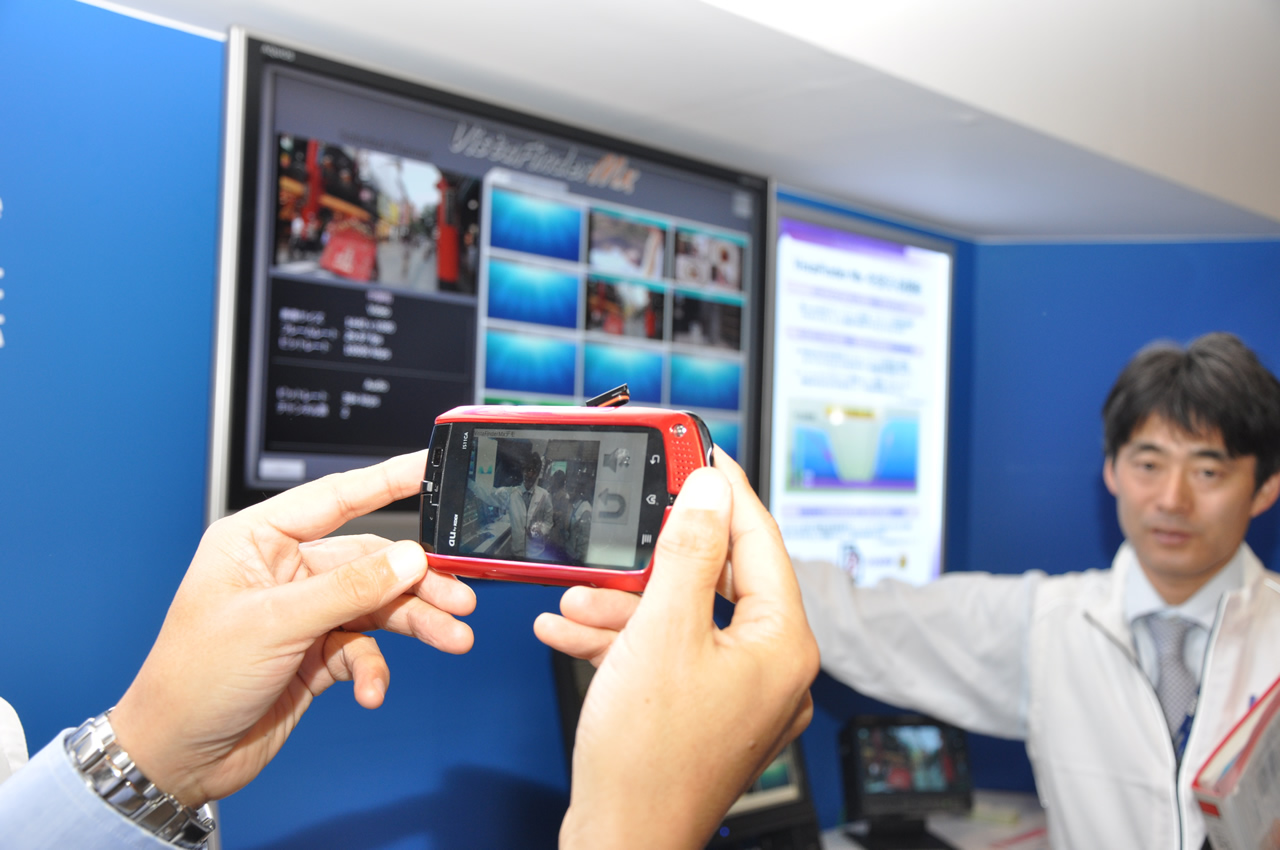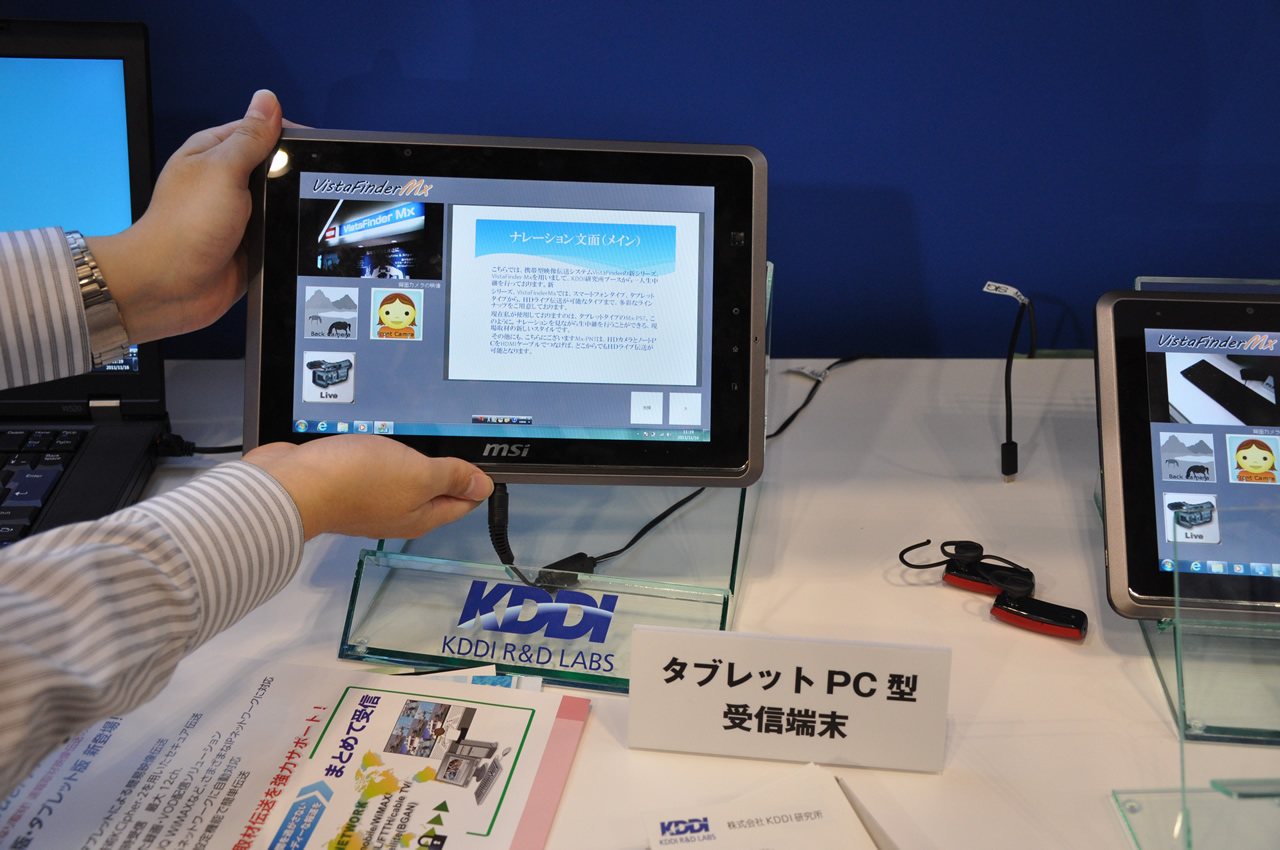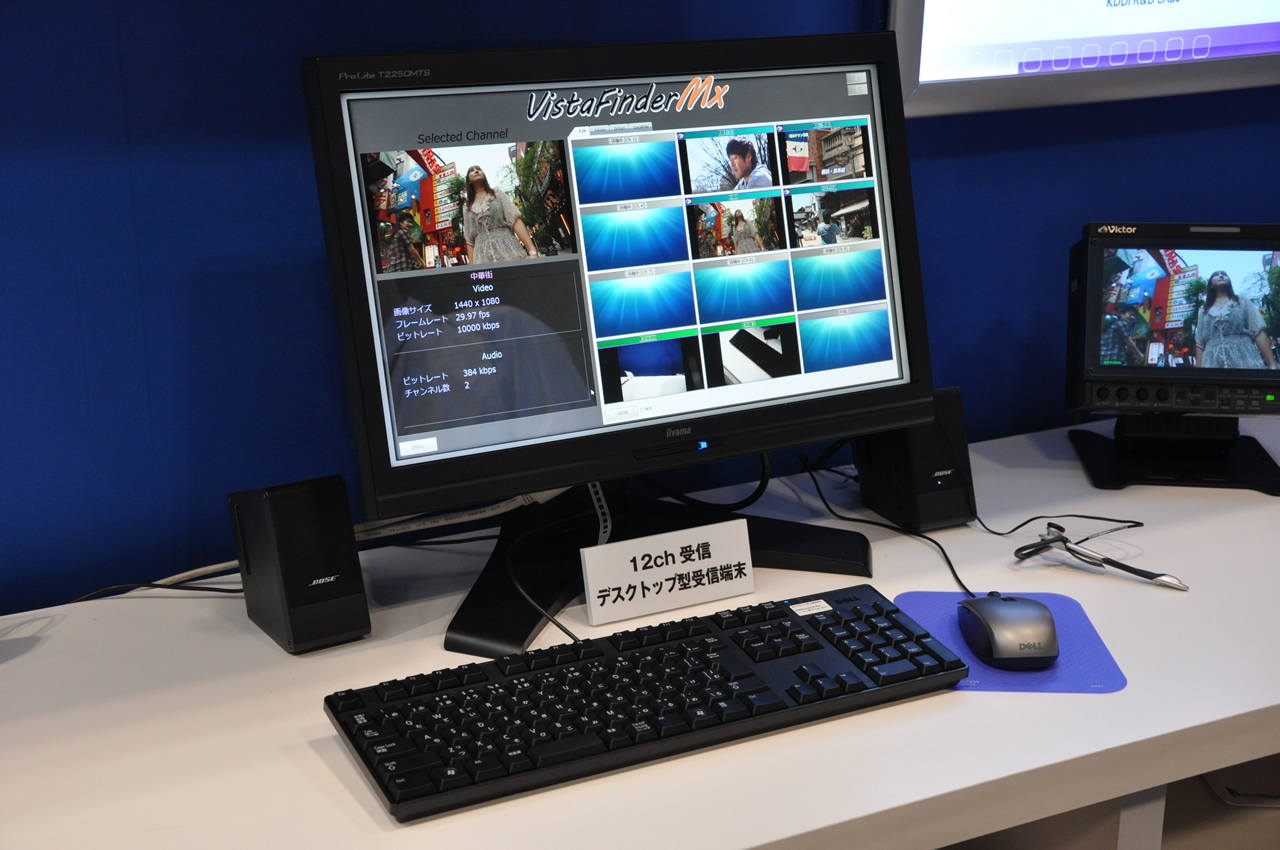InterBEE2011: KDDI R&D Labs exhibit a new version of VistaFinder MX for the first time: Now featuring smartphone broadcast functionality
2011.11.17 UP
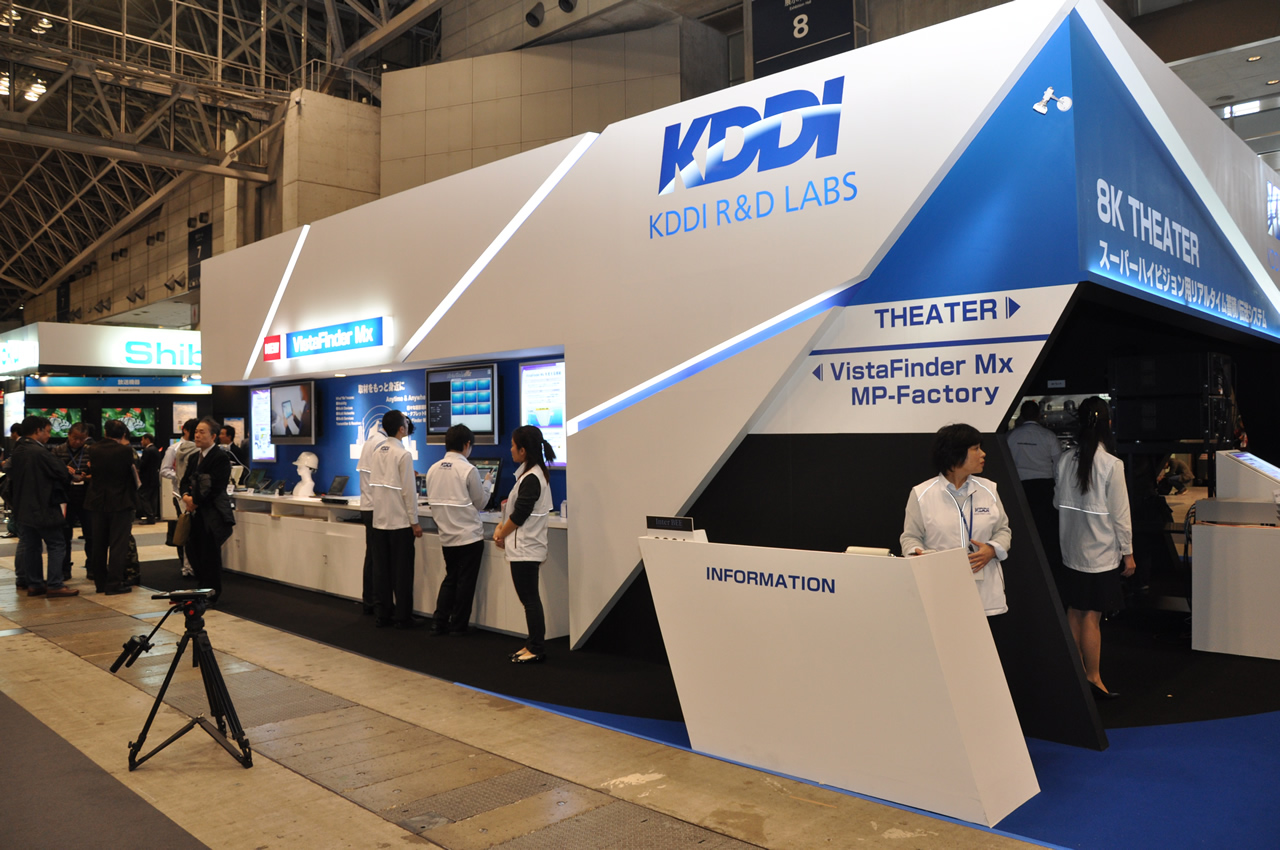
KDDI R&D Labs (Headquarters: Fujimino, Saitama Prefecture; Representative Director: Yasuyuki Nakashima) announced their latest version of VistaFinder MX, now bundled with new features and on display for the first time at this year's Inter BEE at the Makuhari Messe convention hall. The new system is now multi-channel compatible and adds support for sending from smartphones and tablet devices. VistaFinder is a transmission system for high quality mobile video (live and recorded).
■ New system enables Internet and satellite picture feeds over Android tablets and smartphones
VistaFinder is an Internet-based video transfer system that uses PC terminals to send and receive data. Transfers are supported over UQ WiMAX and wireless LAN, IP broadband setups, mobile data setups with au data transfer cards, KDDI's Inmarsat satellite service (BGAN), and other setups.
The just-announced VistaFinder MX adds Andoird tablets and smartphones to the list of compatible sending devices. It also includes such features as multi-channel receiving, KDDI R&D Labs' super high-speed encryption algorithm, KCipher-2 and refinements to prevent signal pauses.
The Android-friendly smartphone version (VistaFinder MX-ASP) and tablet version (VistaFinder MX-PST) utilize those devices' built-in cameras to record and stream video live over 3G and wireless LAN networks.
KDDI representatives say the update allows for receiving up to 12 simultaneous feeds, depending on the receiving device's CPU power and network congestion. They add that the continuous uninterrupted feed functionality was achieved through dynamically adjusting the encoded bit rate on the fly. Senior Chief Engineer Masahiro Saito of the Research Promotion Division further explained that "There are two functions which are in development and not supported yet -- the bulk connection mode, which allows the user to connect to multiple network infrastructures simultaneously, and the seamless handover function, which switches seamlessly across infrastructures depending on network conditions." KDDI says they have also set up a mode which drops down to an audio-only feed when transfer bandwidth drops extremely low or in other similar circumstances.
■ Live feed demonstration on display at KDDI's booth
The VistaFinder MX system is being demoed at KDDI's booth. The demo setup features QVGA video feeds being taken with the VistaFinder MX-ASP Android smartphone version and VistaFinder MX-PST tablet version, then broadcast over UQ WiMAX and a "VistaFinder live server," the results of which are then received by a VistaFinder MX-PDR PC terminal connected to the Internet.
Mr. Saito explained that "video recorded on the smartphones and tablets is compressed to the H.264/AVC QVGA format and transferred at 300kbps." In addition, he noted that while the demonstration shows one-on-one transfer and receiving, the VistaFinder live server used in this system could be further developed in the future: "We are currently considering making this a packaged product or providing it as an ASP service."
"The PC version will be released before year-end, and we plan to release the smartphone and tablet versions in February of next year," he added.
Exhibit hall 8, booth no 8301



